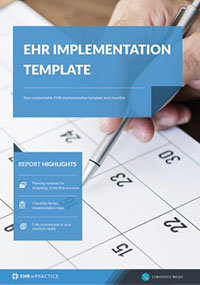3 Common EHR Integration Mistakes
If your practice transitions to an EHR, you should consider integrating it with your medical billing system, too. Your office staff worked together before the transition: staff building charts, billers checking charts, providers giving services, billers sending bills for those services and so on. Integrating the two systems makes your office more efficient. In contrast, not integrating affects your practice negatively. Here are three common integration mistakes to avoid:
1. Choosing not to integrate
The number one integration mistake is not integrating at all. Whether your office staff like it or not, technology streamlines processes. Integrating your EHR and medical billing system offers you the chance to streamline all the regular processes in your office. For instance, allowing your billing staff access to patient records electronically makes it far easier to print relevant information for no fault and workers compensation bills. Similarly, rather than sending paper superbills throughout the office, only to have them sit until the data can be manually entered into the system, your superbills can automatically be entered into the system, which can then automatically create claims.
Recommended Reading: EHR Vendor Directory - Your complete resource to EHR vendors
2. Making it impossible for two people to view a chart
One of my personal pet peeves; not allowing more than one person to view a patient record at a time, is a common integration mistake. After all, the purpose of the technology is to allow everyone who needs to access information to be able to access it. If I need to get into the chart to find medical records for a surgical claim appeal letter, my time is less than optimized when the system tells me a nurse or other staff member is viewing the chart, and that it is therefore locked. Similarly, imagine that a patient services representative receives a call from an insurance carrier. The representative tries to resolve the issue, but finds the chart locked because someone else is viewing it. Not only is the representative unable to help the insurance carrier, but the claim could be delayed because the chart couldn’t be accessed. Delays result in delayed payment, and, in some cases, loss of payment altogether.
3. Not including an audit method
Maybe you worry about everyone having access to the patient chart. Maybe you worry about everyone having access to a patient’s registration. Do not fear! Make sure that you include an audit method when you integrate the billing system and the EHR. Audits allow you to run a report and see who entered a patient’s accounts, who changed details in that patient’s accounts, and whether any action was taken in the patient’s account (such as printing an HCFA). Similarly, you can run reports for individual people if you suspect a compliance breach or inappropriate action in accounts. Not including an audit method is like not including security on any cloud-based or Internet-based system. Do not make the mistake of not adding one.
Free white paper

EHR Vendor Directory
Get the most up-to-date directory of EHR software vendors. Find the best software for your practice.

Featured white papers
-

EHR Implementation Template
Get all the planning tools you need to make your EHR implementation a success
Download -

EHR implementation: 6 steps to success
Step-by-step information on how to implement EHR effectively
Download -

EHR Vendor Directory
Get the most up-to-date directory of EHR software vendors. Find the best software for your practice.
Download
Related articles
-

EHR Implementation Plan: Your 8-Step Checklist
Your comprehensive checklist for creating an EHR implementation plan.
-

A template for your EHR project implementation timeline
Determining your EHR project timeline will prove tricky, but having some expectations of time fra...
-

5 important areas of EHR training during implementation
Successful EHR implementation is not possible without crucial EHR training

